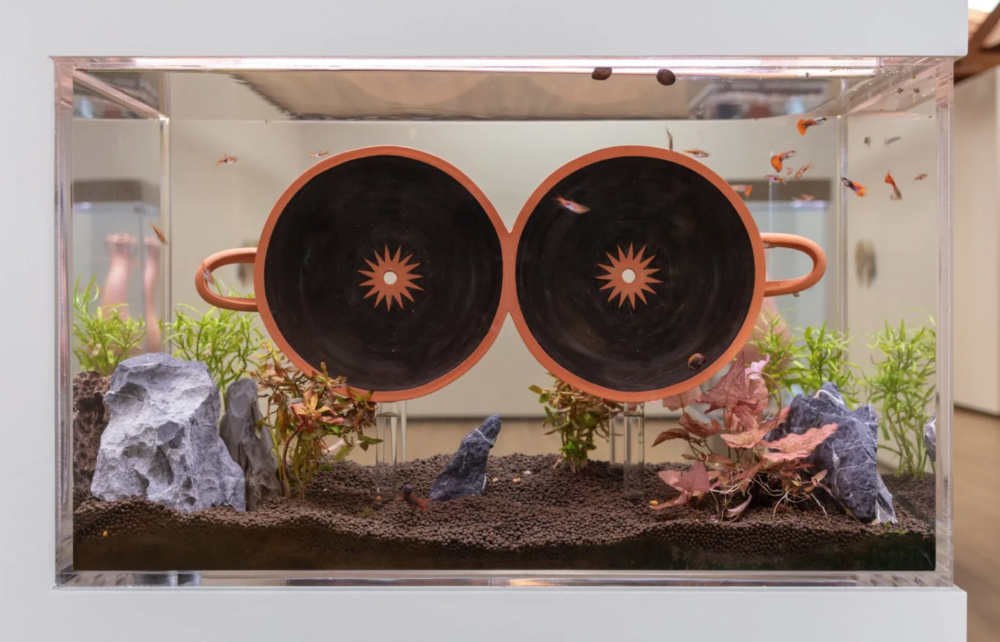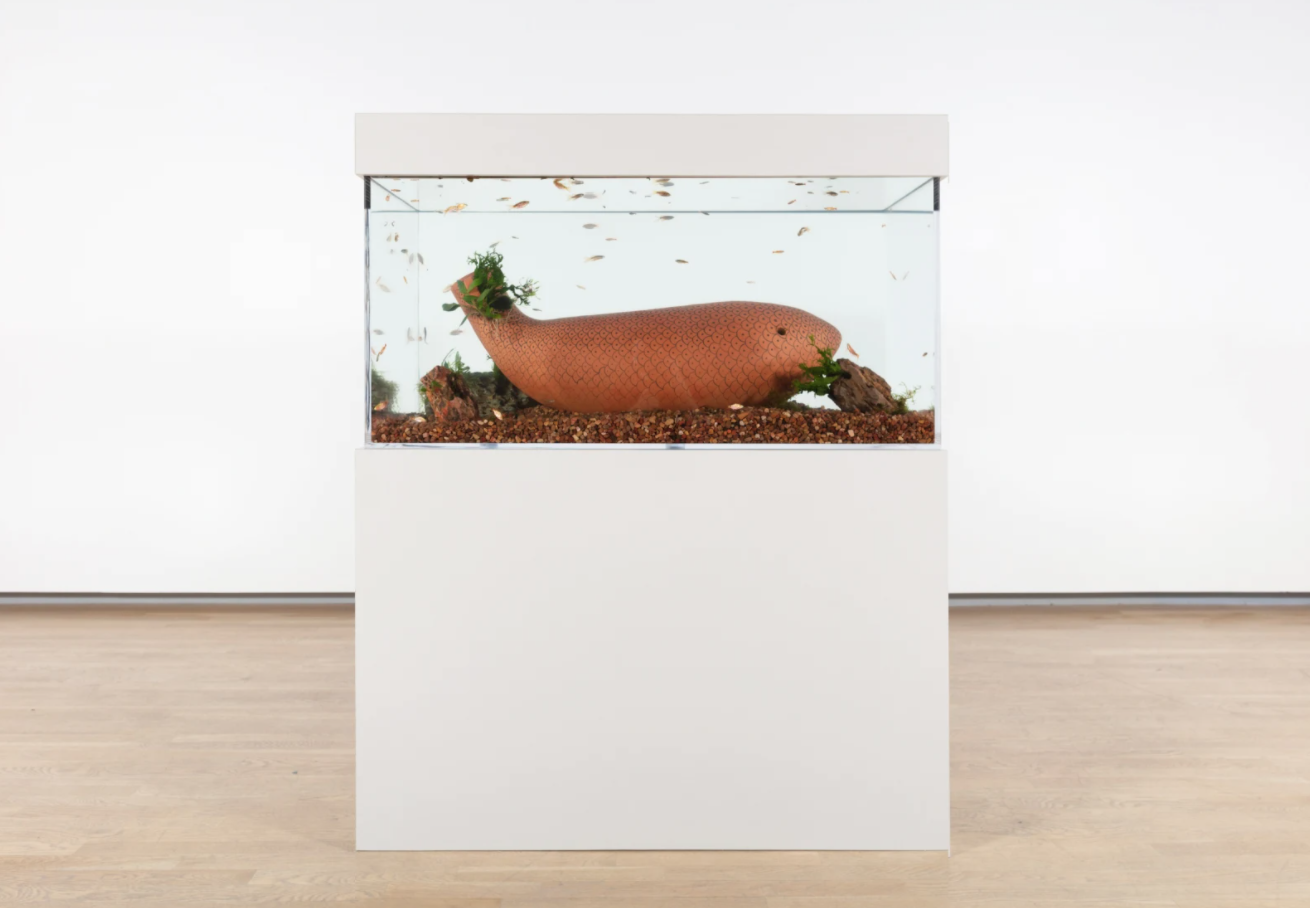Your cart is currently empty!
GALLERY ROUNDS: Cammie Staros Shulamit Nazarian

The atmosphere is quiet and still, the lighting theatrical and in a sequence of different colored rooms, case after display case filled with ceramic vessel-like forms resting at the bottom of brightly lit aquariums exude immobility, enlivened only by fish darting about. The terracotta forms twist into unusual and non-functional shapes gracefully and surprisingly, juxtaposed to some wall-mounted stone carvings accented by shiny droplets on the floor, it all adds up to an eeire and calming spectacle.
The interplay between the seeming antiquity of the vessels and the absolute contemporaneity of the sculpted light environments brings to the fore the contradictions upon which this series of sculptures by Cammie Staros is based. Stone and ceramic are the art forms that most often survive the fire and floods that take the rest. At the same time, these wilfully purposeless objects submerged as they are in a neon-lit living world seem to ask what will become of that which is with us now when it is projected into a future, mirrored by seeing vestiges of that which once was as it is now in the present.

With Futuru Fluidum, 2021, cool blue color of the room offsets the warm and geometrically decorated sinuous shape of the ceramic elements submerged in the vertical chamber. The uplighting of the aquarium accentuates the dramatic elongation of the form, highlighting the orange fish. It conjures up timeless beauty and precariousness simultaneously.
In a contiguous room that is suffused with a deep red light, Concha Clavata, 2021, sits sprawlingly on the floor, two bowl-like elements suspended in the midst of inverted cones that are festooned with small thorn-like elements on all the inner walls. Both menacing and strangely soothing, this work could be part of some imaginary ritual immersion.
On a wall elsewhere, a dimly lit stone sculpture describes the form of an arch. Carefully carved with parts left rough-hewn or with sections of the slab missing, Onyx arcus, 2020, encapsulates the relationship between permanence and decay that seems to be one of the cores of What Will Have Being. And as befits the premise of this work, the title of the exhibition works off of having both past and future tense verbs in the same phrase.
Like the singular art forms located in the entrance, such as Scaphium evolutum, 2020, in which a seemingly straightforward vase is cut into so that the normally closed volume is turned into an open-ended spiral, the work in this exhibition upends expectations and calls on the viewer to extrapolate and reflect on the ecological and historical implications. A mash-up of museum and salon is created without any irony. It is a serious albeit subtle investigation.